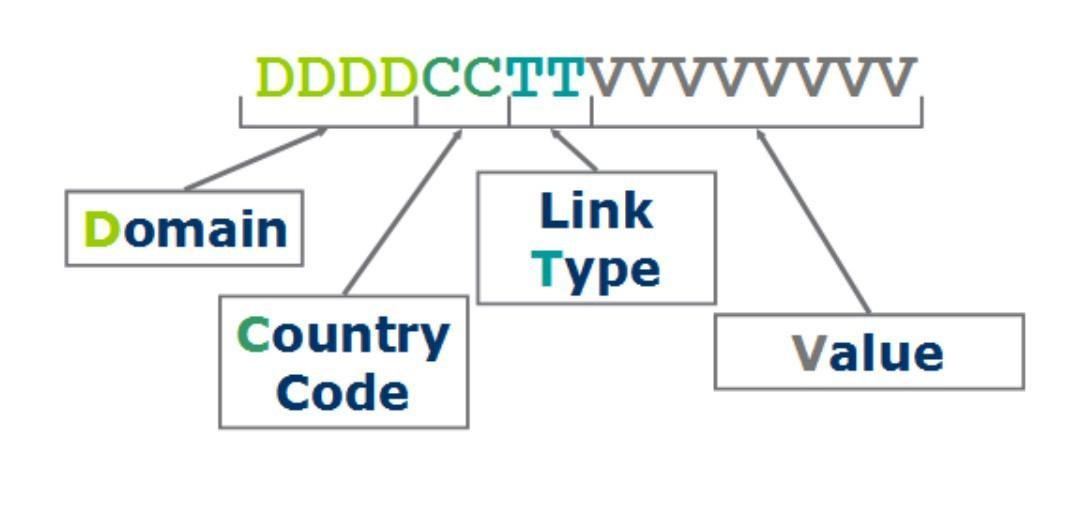AbiliTec Identifiers
Learn about the AbiliTec Identifiers returned for API calls, including ID versions and ID formats.
AbiliTec IDs are identifiers that are tied to a record in the AbiliTec offline identity graph. They allow you to identify and consolidate records across multiple systems. When you make API calls with two distinct sets of PII, and AbiliTec reconciles them to the same entity, then the same AbiliTec ID is returned for each request.
You can structure the API call to return only the best match for the input data, or you can choose to receive multiple identifiers for input data that matches to multiple identifiers.
When the AbiliTec ID is returned, you don't see the underlying ID, only a version of the ID. A Client Domain identifier will have a different value for each client even if the underlying LiveRamp Domain identifier is the same. This aids client privacy and reduces the probability of collusion.
AbiliTec ID Types
There are three types of AbiliTec IDs:
- A Person ID represents an individual.
- A Place ID represents a site or physical location.
- A Household ID represents adults living together at the same location who exhibit a persistent relationship.
You can specify what AbiliTec ID type is returned by calling specific endpoints and including parameters such as the document class parameter.
AbiliTec ID Versions
There are two versions of AbiliTec IDs:
- Maintained versions
- Derived versions
Maintained Versions
When you make an AbiliTec API call and there is a match in the AbiliTec Identity Graph, a maintained AbiliTec ID is returned. This version of AbiliTec ID is maintained and is persistent.
Maintained IDs can change over time, due to new information being added to the identity graph. Performing maintenance on your records by making periodic calls to the Maintenance endpoint will provide you with any updates to the maintained AbiliTec IDs in your system.
Derived Versions
When you make an AbiliTec API call and there isn't a match in the AbiliTec Identity Graph, a derived AbiliTec ID version is returned. AbiliTec IDs that are derived versions are algorithmically derived and persistent—if you input the exact same PII string, the response will show the same derived AbiliTec ID. Derived AbiliTec IDs are not maintained in the identity graph.
Derived versions are returned so that there is an identifier for every record. Because they are algorithmically derived, the exact same input data must be sent to receive the same derived ID.
A derived AbiliTec ID can be updated to a maintained AbiliTec ID as new data is added to the identity graph. Running your data through AbiliTec allows you to update the derived AbiliTec IDs for records that have changed.
Updating Derived AbiliTec IDs
Because derived AbiliTec IDs are not maintained in the identity graph, performing calls to the Maintenance endpoint will not provide you with updates to the derived AbiliTec IDs in your system.
AbiliTec ID Formats
AbiliTec IDs are returned in two formats. Both formats identify the AbiliTec ID type (Person, Place, and Household) and the AbiliTec ID versions (maintained or derived). Your use case might determine which AbiliTec ID format you will use in your application.
- AbiliTec Links
- AbiliTec DocIDs
AbiliTec Links
AbiliTec Links have a 16-byte alphanumeric structure that indicates the AbiliTec customer (the “domain”), the country code, the ID type and version, and the entity value.
AbiliTec Link Structure

Link Components
The Link format has 4 components:
| Component | Description |
|---|---|
| Domain | The 4-digit code that uniquely identifies the AbiliTec customer. |
| Country Code | The 2-digit country code for the underlying data used in the matching. For maintained Links, this will be “US” for United States. |
| Link Type | The 2-digit code for the link types: 01: Maintained Person Link 03: Maintained Place Link 08: Maintained Household Link 11: Derived Person Link 13: Derived Place Link 18: Derived Household Link |
| Value | The 8-digit alphanumeric ID value that uniquely identifies the associated data. |
AbiliTec DocID
AbiliTec DocIDs have a 38-byte alphanumeric structure that indicates the AbiliTec customer (the “domain”), the environment (the “realm”), the country code, and the entity value.
AbiliTec DocID Structure

DocID Components
The DocID format has 5 components:
| Component | Description |
|---|---|
| Domain | The 4-digit code that uniquely identifies the AbiliTec customer. |
| Realm | The “environment” the DocIDs are being used in. For the vast majority of customers, the DocIDs are used in a “known” environment (i.e., one in which the DocIDs are being stored along with PII), which is indicated by “00”. |
| Country Code | The 2-digit ISO 3166-1 country code for the underlying data used in the matching. For maintained DocIDs, this will be “US” for United States. For derived DocIDs, this will be “ZZ”. |
| Reserved | These 2 digits are reserved for future use. |
| Value | The 28-digit alphanumeric ID value that uniquely identifies the associated data. |
DocIDs do not contain the following:
- Document Class parameter
- Bundle information
- Attribute values from the document
- Request parameter values
- Information about the type of request that returned the DocID
DocID Examples
| Term | Example |
|---|---|
| Maintained DocID | 003Y00US00_yo6iQsYeCWVo0rfRsrpPtte1Eo4 |
| Derived DocID | 003Y00ZZ00XiSeV7_PXovqDxrfjrTTwyn2X6Jj |
Updated about 4 years ago